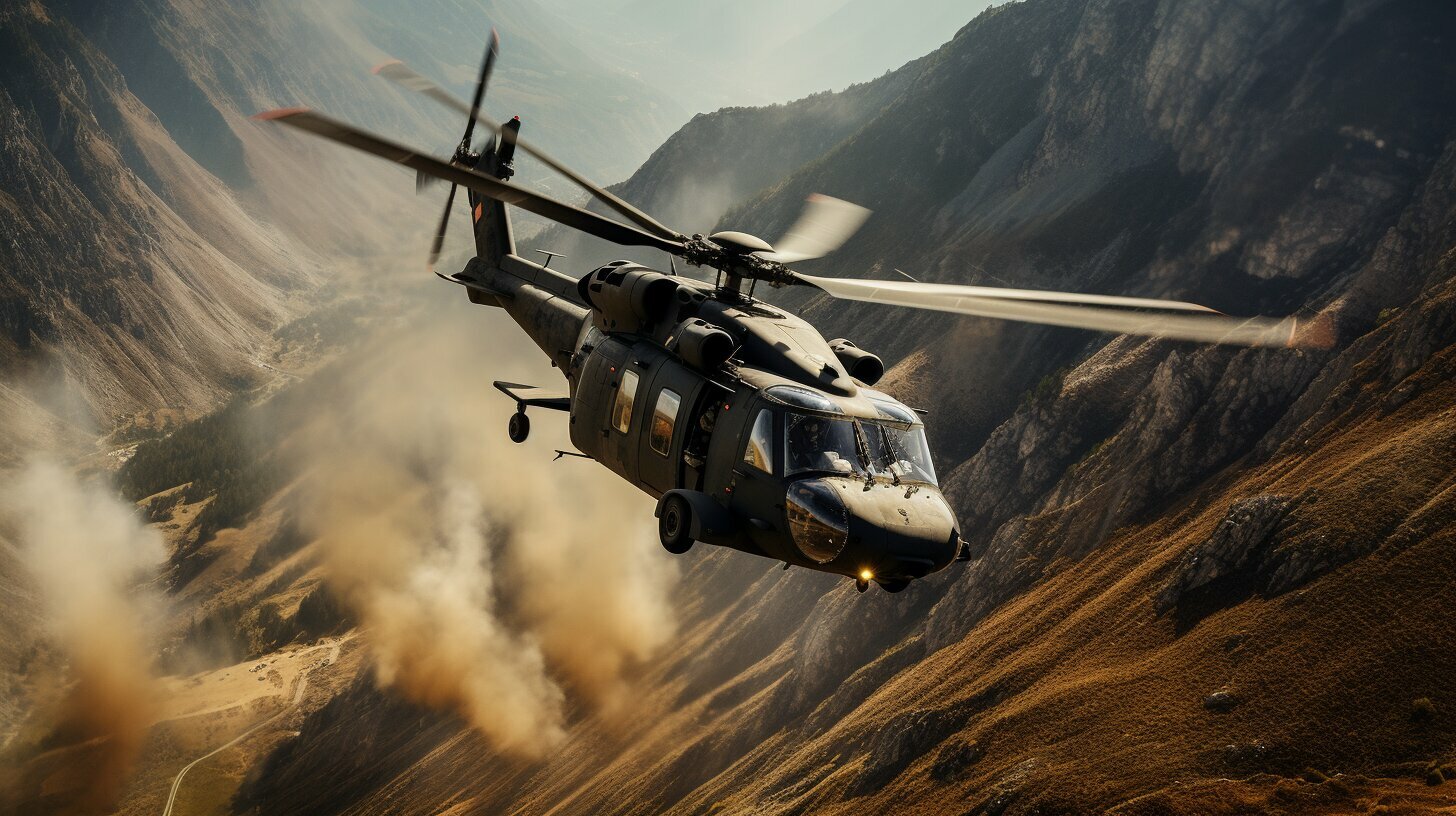
How Airships Could Make a Comeback
For much of the early 20th century, airships were seen as the future of air transportation. These gas-filled aircraft offered something that early airplanes did not – the ability to transport passengers and cargo long distances in comfort, while also landing and taking off vertically without the need for runways. However, a number of high-profile airship disasters in the 1930s, including the infamous Hindenburg explosion, led to the abrupt end of the airship era.
Now, nearly a century later, airships may finally be ready for a comeback. Advances in materials, propulsion systems, and aerodynamic design have helped solve many of the technical problems that plagued early airships. A few companies are once again exploring the potential of these unique aircraft to revolutionize cargo transport, provide scenic aerial tours, and even serve as “air yachts” for the ultra-wealthy. Here is an in-depth look at how modern technology could resurrect airships for the 21st century.
Why Airships Lost Popularity in the 20th Century
For much of the early 20th century, rigid and semi-rigid airships were considered a promising form of transportation technology. Airships had some major advantages over early airplanes:
- Long range: Airships could travel thousands of miles without refueling, while most airplanes in the 1920-1930s had a range of a few hundred miles at most. The airship Graf Zeppelin circumnavigated the globe in 1929.
- Versatility: Airships did not require an airfield or runway to operate. They could land on water, snow, or even unimproved fields. This allowed them to access remote areas that fixed-wing aircraft could not.
- Comfort: Passenger airships provided much more room and comfort compared to crowded early airplanes. The famous Hindenburg airship had a lounge, dining room, promenade decks, sleeping berths, and other amenities.
However, major disasters in the 1930s shattered public confidence in airships and put an abrupt end to their era. These included:
- The crash of the British airship R101 in 1930, killing 48 of the 54 people on board. This led Britain to abandon its airship development program.
- The catastrophic explosion of the Hindenburg in 1937, which killed 36 people. Extensive media coverage of this disaster effectively marked the end of airships as a mode of passenger transportation.
- The crash of the USS Macon in 1935. This marked the end of the U.S. Navy’s airship program.
Additionally, new technologies such as the DC-3 airliner showed that fixed-wing aircraft could provide efficient long-distance air transportation without the drawbacks and dangers associated with hydrogen-filled airships.
Modern Airship Designs and Capabilities
A major shift that is making airships viable again is the development of modern materials and design capabilities that address the safety and performance issues that dogged early 20th century airships:
Structure
- Advanced structural framework – Modern rigid and semi-rigid airships utilize advanced lightweight materials like carbon fiber, composites, and aluminum to create strong, yet lightweight frameworks that maintain aerodynamic shape without heavy skeletal structures.
- Improved air envelope design – Airship manufacturers are using new fabric materials and coatings to create more durable gas envelopes that retain the lifting gas (usually helium) without leaks. This improves safety compared to flammable hydrogen used in early airships.
Propulsion and Maneuverability
- Improved maneuverability – Early airships were difficult to maneuver and dock, relying on ground crews. Modern designs utilize improved rudder and propulsion designs for precision hovering, takeoff, landing and docking capabilities.
- Hybrid propulsion – New airships are transitioning away from awkward engine gondolas. They utilize aerodynamic hybrid propulsion systems combining engines, batteries, solar panels, and rotating wings/thrusters distributed seamlessly over the hull.
- Vertical takeoff and landing (VTOL) – This capability allows airships to operate without runways and access congested urban areas, remote locations, and sites without aviation infrastructure.
Avionics and Systems
- Advanced avionics – Modern navigation, instrument, and flight control systems derived from fixed-wing aviation greatly improve the reliability and situation awareness for airship pilots.
- All-weather operation – Early airships lacked sophisticated instrumentation and were mostly limited to visual flight conditions. Modern sensor suites allow airships to operate safely in all weather.
- Improved ballast control – Computerized ballast adjustment systems provide better altitude control and allow airships to handle cargo loading/unloading while maintaining neutral buoyancy.
Roles for Modern Airships
With their unique capabilities and improvements in technology, some of the prime roles envisioned for airships today include:
Cargo Transport
Several companies are developing massive cargo airships capable of lifting up to 500 tons. These airships could provide an alternative for transporting oversized and extremely heavy cargo currently carried by ships, barges, and railroads. Benefits include:
- Ability to access remote regions without roads or water access.
- Faster transport times compared to marine shipping.
- Ability to lift gigantic, awkward loads.
- “Floating cranes” can lift cargo vertically into the ship.
- Less infrastructure needed compared to airports. Airships can land on stubby runways or even water/snow.
- Cargo can be slung underneath the airship rather than packed inside, simplifying loading/unloading.
Challenges include ensuring stability when loaded, need for significant ground crew and infrastructure, high projected costs, and unproven economics.
Luxury/Tourism
Modern airships also provide a unique platform for leisure activities and luxury tourism:
- Scenic tours over cities, wilderness, and remote regions that regular planes and helicopters cannot access.
- “Destination airships” that provide a relaxing multi-day journey vs. hurried air travel.
- Luxury “air yachts” tailored for VIP/celebrity parties, conferences, and transportation.
- Advertising/promotional platforms with an airship emblazoned with a company name or brand.
- Airborne sporting events and platforms for new activities like skydiving from airships.
Military Applications
Militaries still see advantages in airships for reconnaissance, surveillance, communications, and transport duties. Military roles include:
- Airborne early warning (AEW) and intelligence/surveillance/reconnaissance (ISR) platforms that can persist over an area for long periods.
- Communications relays and aerial cell towers due to ability to station-keep for extended periods.
- Logistics transport to austere locations where airlift is difficult.
- Platforms for sensors and missile defense systems.
The United State military has continued low-level development of advanced airships through organizations such as the Military Sealift Command (MSC) Airship Program Office. Defense applications are still limited due to the vulnerability of airships to attack.
Commercial Applications
Businesses are also exploring airships as novel commercial platforms:
- “Billboard airships” for aerial advertising over cities and heavily trafficked areas.
- Airborne broadcasting platforms for video, communications, and sensors during major events. Recent examples include the MetLife Snoopy blimp providing aerial TV shots.
- Airships fitted with cameras, lidar, and sensors to gather geospatial data, inspect infrastructure, and conduct environmental survey missions.
Challenges for the Airship Industry Revival
While technology has improved, airship developers still face formidable challenges:
Proving economics: High development costs and unproven economics still cloud the business case for airships. Operational expenses may also be high due to needs for ground infrastructure and large crews.
Significant infrastructure: Airships require masts, hangers, ground crews, and other infrastructure nonexistent at most modern airports oriented to fixed-wing and helicopter traffic.
Uncertain market: Aside from niches like tourism and advertising, it is still uncertain whether demand exists for airship transportation and logistics. Competing modes like air freight may be faster and cheaper.
Regulatory hurdles: Integrating slow airships into busy modern aviation system raises air traffic control and safety regulation challenges that did not exist in the early 20th century.
Public perception: Most people associate airships with the Hindenburg disaster. Changing this perception through successful operations without major incidents will be critical to public acceptance.
Weather vulnerability: While more advanced than older airships, wind, thunderstorms, and other severe weather still pose operating risks, especially near ground level.
Major Modern Airship Companies and Projects
A handful of companies worldwide are currently developing the airships of the future:
Hybrid Air Vehicles – Airlander
- UK-based company with roots in U.S. military airship development programs.
- Focus on huge helium-filled cargo airships called the Airlander series.
- The Airlander 10 prototype successfully flew test missions from 2012-2017. It uses aerodynamic lift like an airplane but retains VTOL capability.
- Airlander 50 under development for cargo with 500 ton capacity and 95 mph cruising speed.
Worldwide Aeros – Aeroscraft
- Founded in 2006 in California to develop rigid-structure cargo airships.
- Prototypes include the Aeroscraft ML866 which first flew in 2013 with 66 ton capacity and top speed of 115 mph.
- Larger Aeroscraft ML868 model planned with 250 ton capacity and 139 mph cruising speed using hybrid buoyancy and aerodynamic lift.
Lockheed Martin – P-791
- Lockheed’s secretive Skunk Works division tested a smaller prototype airship called the P-791 from 2006 to 2014.
- The P-791 had an experimental hull shape and hybrid propulsion system with both thrust vectoring and aerodynamic lifting surfaces.
- Program goals apparently included vertical takeoff and landing plus a “hover hold” capability for stable station keeping without mooring.
E-Green/Sceeburger – Pathfinder Z-8
- Joint Swiss and German project by two airship companies to develop a luxury “air yacht” passenger airship.
- The Pathfinder Z-8 would carry 8 passengers with amenities such as a master suite, rest area, bathroom, bar and panoramic windows.
- Unique spar-less lenticular aerodynamic design proposed, but the project appears to have stalled since 2018.
Varialift – Varialift AirCrane
- U.S. startup proposing to revive the cargo airship concept with an “AirCrane” external load lifting design.
- Envisioned as primarily a “floating crane” that carries loads slung beneath rather than packed internally.
- Claims economic advantage by avoiding costs of internal cargo space and loading/unloading infrastructure.
- Seeking $2 million in crowdfunding for initial prototype as of 2019.
Outlook for the Future of Airships
While still a niche technology today, interest and investment in airships continues to grow. Small scale tourism projects are operational, while cargo proponents push large airship concepts despite economic uncertainties.
Regulatory bodies like the U.S. Federal Aviation Administration and civilian airship trade groups are working to establish an operational framework enabling airships to coexist with conventional air traffic. Europe has historically been more receptive to airship concepts, but interest in Asia is also growing.
If current technological, regulatory, and economic hurdles can be overcome, some experts envision airships filling viable transportation niches:
- Short-haul cargo delivery from manufacturing centers to population centers, bypassing ground congestion.
- Remote area mining, oil/gas, forestry and construction support.
- Cargo delivery on minimally developed routes like China to Africa.
- Tourism over natural areas like the Grand Canyon and Aurora Borealis.
- Airborne advertising and promotional platforms.
Much still depends on pioneering companies successfully proving airship capabilities and economics. But with their unique benefits, airships seem destined to fill at least a limited role in coming decades of aviation innovation. The majestic days of giant zeppelins docking at towering masts on skyscraper roofs may never return. But given improvements in technology, airships now seem poised for a long-awaited comeback in some capacity.
Frequently Asked Questions about Modern Airships
How much payload can modern airships carry compared to early 20th century airships?
The largest airships of the 1920s-1930s could carry payloads in the range of 100 tons. In contrast, modern cargo airship designs boast payload capacities of 250-500 tons or more, thanks to improved structural materials and more efficient use of lifting gas.
What types of propulsion do modern airships use?
Most contemporary airship prototypes have moved away from loud, exposed engine gondolas. They employ quieter internal engines, batteries, and electric motors driving swiveling thrust vectoring propellers or duct fans distributed along the hull. Some also use solar panels integrated into the upper skin for supplemental power.
How have safety and accident risks been addressed on new airship designs?
Modern airships utilize inert helium instead of flammable hydrogen lifting gas. They also employ advanced weather radar, redundant flight systems, computerized ballast adjustment, and fail-safe measures. Engine power can be cut and gas valved if necessary for emergency descent. Structural designs aim to withstand reasonable loads.
Can modern airships really land without ground infrastructure like masts and mooring equipment?
New VTOL-capable airship designs are engineered for fully self-sufficient landing and ground handling without ground infrastructure. For cargo airships, temporary masts may still be used at major loading/unloading locations to facilitate vertical transfer of loads.
What are the speed capabilities of modern airships? Are they still slow like blimps?
Early airships typically cruised at 60-80 mph, with top speeds up to about 100 mph. New designs achieve cruising speeds in the range of 80-140 mph thanks to streamlined shapes and aerodynamic lift supplementation. This is still slower than fixed-wing aircraft, but faster than early airships.
Could airship travel ever be as routine and affordable as commercial airplane travel?
This is considered unlikely in the near future. Airships still have higher infrastructure needs compared to airplanes, with lower cargo/passenger capacity per trip. Airships are probably more likely to fill niche roles than fully replace other transportation modes. Costs will remain higher compared to commercial air travel.
How environmentally friendly are airships compared to other transport modes?
Airships are seen as more environmentally friendly compared to other aircraft because they need less infrastructure and can be powered by combinations of electric propulsion, solar panels, and lightweight engines. They also produce less noise and air pollution due to lower speeds and engine power needs. But their overall environmental impact depends on operational factors.
Can modern airships operate just as well at night as during the day?
Yes, modern sensor suites including radar, LIDAR, infrared and low-light cameras allow current-generation airships to operate safely at night and in low visibility conditions. However, heavy fog or thunderstorms can still limit their capabilities due to their vulnerability while near the ground.
Could airships make sense again for passenger transportation?
Potentially for premium luxury or tourism markets where time savings are not critical. For mainstream travel, airships cannot compete with airliners on speed over long distances. Shorter excursion trips are one possibility where their space, comfort and viewing capabilities could attract passengers.







